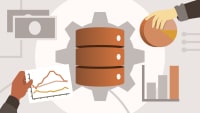Description
In this course, you will learn what data is and consider what questions you have that data can answer – even if you have never thought about data before. You will learn to develop a research question, describe the variables and their relationships, calculate basic statistics, and clearly present your results based on existing data. By the end of the course, you will be able to manage and visualise your data using powerful data analysis tools – either SAS or Python – including how to deal with missing data, variable groups, and graphs.
Syllabus :
1. Selecting a research question
- Steps in data analysis
- What do we mean by data?
- Datasets and codebooks
- Developing a research question
2. Writing your first program - SAS or Python
- Defining exploratory data analysis
- SAS coding conventions
- Running your program and examining frequency distribution
- Refining your research question by selecting rows
- Defining Exploratory Data Analysis
- Python Coding Conventions
- Running your program and examining frequency distributions
- Refining your research question by selecting rows
3. Managing Data
- Setting aside missing data
- Coding in valid data and recoding values
- Creating secondary variables
- Grouping variables within individual variables
- Setting aside missing data
- Coding valid data and recoding values
- Creating secondary variables
- Grouping values within individual variables
4. Visualizing Data
- Graphing individual variables
- Describing distributions visually
- Measures of center and spread
- Designing the role each of your variables will play
- Graphing individual variables
- Describing distributions visually
- Measures of Center and Spread
- Designing the role each of your variables will play
- Graphing Decisions: Categorical response variables
- Quantitative response variable








